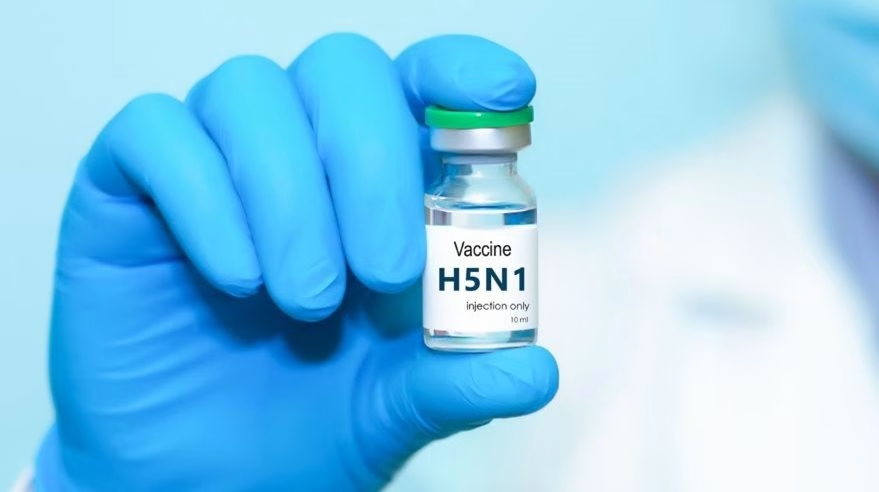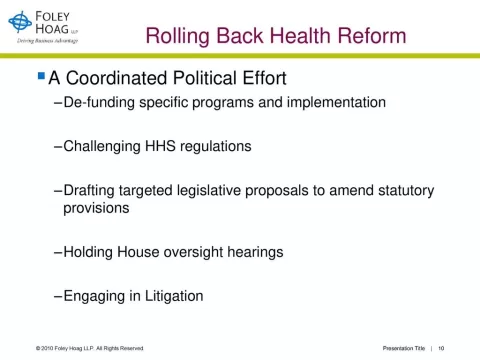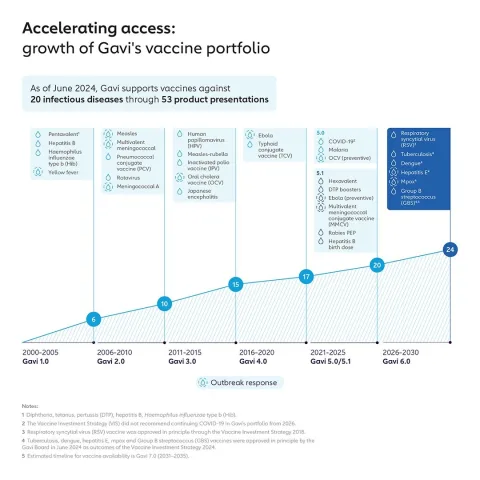The intranasal H5N1 vaccine represents a promising frontier in influenza vaccine research, particularly in the fight against avian flu. Recent phase 1 trials have shown that this innovative intranasal vaccine generates a broad immune response among US adults, underscoring its potential to prevent avian flu transmission. With ongoing concerns about the H5N1 virus and its ability to mutate, pandemic preparedness has never been more critical. Unlike traditional intramuscular influenza vaccines, the intranasal H5N1 vaccine enhances immunity right at the entry point of infection, providing a much-needed advantage in disease control. As researchers continue to explore the efficacy of this avian flu vaccine, the hope is to deliver a robust shield against future outbreaks and protect public health.
The emerging intranasal vaccine for H5N1, derived from avian influenza strains, is a groundbreaking development in the realm of infectious disease prevention. This vaccine type enhances the body’s defense mechanisms at the nasal passage, offering a strategic approach to mitigate flu transmission effectively. With avian flu posing a persistent threat to global health, the necessity for advanced vaccination techniques like the intranasal H5N1 vaccine becomes increasingly apparent. As investigations into this vaccine’s effectiveness continue, it is clear that innovative solutions are vital for combatting potential pandemics and ensuring comprehensive safety against evolving strains of the virus. The research signifies a shift towards more dynamic flu vaccine strategies, highlighting the relentless pursuit of effective public health interventions.
The Promise of Intranasal H5N1 Vaccines in Avian Flu Control
The recent phase 1 trial of the experimental intranasal H5N1 vaccine showcases a breakthrough in avian flu vaccination techniques. Unlike traditional intramuscular influenza vaccines, which primarily initiate systemic immune responses, intranasal vaccines are designed to stimulate local immunity at the mucosal layer, the entry point for many respiratory pathogens. This is particularly vital for H5N1, where the virus can evolve rapidly, necessitating vaccines that can adapt and elicit a quick immune reaction at the infection site.
The trial results indicate that the intranasal H5N1 vaccine prompts not only enhanced systemic immunity but also a robust mucosal immune response. Such a dual action is crucial during outbreaks, potentially reducing the spread of the virus between individuals. Given the increase in transmissibility of H5N1 strains, this form of vaccination represents a promising advance in avian flu control and underlines the importance of vaccine diversity in preparedness strategies for future pandemics.
Implications for Pandemic Preparedness and Influenza Research
The findings of the intranasal H5N1 vaccine trial emphasize the urgent need for innovative solutions in pandemic preparedness. As highlighted by researchers, the adjuvanted vaccine’s ability to generate a robust immune response while potentially lowering dosage requirements could optimize existing vaccine supplies during an outbreak. This is crucial, given the unpredictable nature of influenza viruses and the reality of limited vaccine stocks during rapid viral spread.
Moreover, the success of this research contributes significantly to ongoing influenza vaccine research. By exploring how intranasal administration can enhance immunogenicity, scientists can have a foundation to develop broader-spectrum vaccines that tackle various influenza strains effectively. The pressing nature of H5N1 infections, as noted in recent fatalities, further underscores the importance of developing and implementing such vaccines without delay.
Comparing Intramuscular and Intranasal Vaccination Strategies
Traditional intramuscular influenza vaccines have long been the cornerstone of influenza prevention, effectively generating systemic antibodies that protect against symptomatic illness. Nonetheless, they often fall short in preventing human-to-human transmission of respiratory viruses. The recent trial showed that the intranasal platform does not just enhance local mucosal immunity but also offers a mechanism to limit virus spread in the community, making it a compelling alternative in vaccination strategies.
The comparative effectiveness of intranasal vaccines highlights a critical discussion in public health regarding the best methods to protect populations during flu epidemics. As researchers continue to uncover the benefits of intranasal administration, health organizations can better tailor vaccination campaigns to lower transmission rates and adapt to evolving viral characteristics, ensuring more effective community-wide immunity.
Safety and Tolerability of Intranasal Vaccines
One of the significant advantages of the intranasal H5N1 vaccine, as reported in the trial, is its safety profile. Participants experienced no severe side effects, underscoring the vaccine’s acceptability for broader populations, including children and the elderly, who are often prioritized in vaccination programs. The acceptable tolerability of the vaccine also plays a pivotal role in public health initiatives, as individuals are more likely to receive vaccination when side effects are minimized.
Furthermore, the ability of intranasal vaccines to generate protective responses without the need for complex administration techniques may improve vaccine uptake, especially in populations hesitant about traditional injections. The data gathered from this trial could pave the way for wider acceptance of intranasal vaccines, further enhancing their potential role in mitigating avian flu outbreaks.
The Mechanism Behind Intranasal Vaccine Efficacy
The immune response elicited by the intranasal H5N1 vaccine is underpinned by its unique delivery method, which targets the mucosal surface directly. This approach enables the vaccine to activate immune cells precisely where respiratory pathogens typically enter the body. Such localization emphasizes the need for vaccine designs that are attuned to the pathways of infection, particularly for highly pathogenic viruses like avian flu.
By generating higher levels of both systemic and mucosal antibodies, the intranasal vaccine can effectively neutralize circulating and emerging H5N1 strains. As the immune system retains a memory of these responses, re-exposure to the virus can trigger an expedited immune reaction, potentially preventing illness. This mechanism underscores the importance of continuing research into novel vaccine formats that can adapt to the evolving landscape of influenza viruses.
Advancing the Landscape of Avian Flu Vaccines
The development of the intranasal H5N1 vaccine marks a significant advancement in the landscape of avian flu vaccines. As previous vaccines have often struggled with efficacy in rapidly changing viral environments, this novel approach could reshape our ability to respond to future outbreaks proactively. Effective avian flu vaccines not only safeguard human health but also play a vital role in managing animal health and preventing zoonotic spillover events.
Furthermore, the incorporation of adjuvants has been proven to boost the immune response, allowing for reduced doses which could extend the availability of vaccines during outbreaks. As we learn more about the complexities of avian influenza and its potential to cause pandemics, the insights gained from this trial facilitate the groundwork for robust, flexible vaccine strategies capable of addressing future public health challenges.
Broader Implications for Global Health Initiatives
The promising results from the intranasal H5N1 vaccine trial resonate significantly within the context of global health initiatives aimed at preventing pandemics. As viral strains continue to evolve, establishing mechanisms for rapid vaccine development and distribution becomes increasingly critical. These efforts must align with international health guidelines and collaborative frameworks that ensure equitable access to effective vaccines worldwide.
Moreover, the trial underlines the interplay between scientific research and public health policy. As countries bolster their pandemic preparedness plans, incorporating innovative vaccine strategies like intranasal delivery could enhance global surveillance and response efforts, ultimately reducing the risk of widespread H5N1 outbreaks and fostering greater resilience against future infectious threats.
The Future of Influenza Vaccine Innovations
As we advance further into the realm of influenza vaccine innovations, findings from the intranasal H5N1 vaccine trial illustrate the necessity for ongoing research and development. The ability to influence both mucosal and systemic immunity can revitalize our approach to controlling seasonal influenza and potential pandemics. It emphasizes exploring diverse candidates that prioritize safety, efficacy, and broad-spectrum protection.
The future of influenza vaccine innovations relies not only on understanding the biological mechanisms at play but also on integrating new technologies. As vaccine delivery systems evolve, the inclusion of intranasal formulations could present a viable solution to enhance public uptake and compliance, ultimately leading to higher vaccination rates and lower incidence of influenza-related illnesses worldwide.
Educational Initiatives and Public Awareness of H5N1 Vaccines
To maximize the potential of the intranasal H5N1 vaccine, educational initiatives and public awareness campaigns must be prioritized. Clear communication regarding the benefits, efficacy, and safety of this vaccine can dispel myths and increase public confidence in vaccination programs. As communities grapple with vaccine hesitancy, fostering trust in scientific advancements becomes paramount.
Furthermore, engaging with healthcare professionals to provide accurate information on the intranasal H5N1 vaccine will empower them to address concerns effectively. As trusted figures in the community, healthcare providers play a critical role in advocating for vaccination, which is essential in promoting collective immunity and ensuring protection against avian flu threats.
Frequently Asked Questions
What is the intranasal H5N1 vaccine and how does it work?
The intranasal H5N1 vaccine is an experimental vaccine designed to protect against avian influenza (H5N1) by stimulating both systemic and mucosal immunity. Unlike traditional intramuscular vaccines, it is administered through the nasal route which enhances immunity at the site of infection, providing a more robust response to the virus.
How effective is the intranasal H5N1 vaccine in generating an immune response?
Clinical trials have shown that the intranasal H5N1 vaccine elicits a broad immune response in adults, including higher levels of protective antibodies and memory immune cells. This response is critical for combating various strains of the H5N1 virus and offers advantages over traditional intramuscular influenza vaccines.
What was the significance of the recent phase 1 trial for the intranasal H5N1 vaccine?
The phase 1 trial demonstrated that the intranasal H5N1 vaccine is safe and well-tolerated, while effectively priming the immune system against H5N1. This study underscores its potential role in pandemic preparedness, especially against emerging viral strains.
Why is the intranasal route preferred over intramuscular vaccination for H5N1?
The intranasal route is preferred as it enhances local immunity in the respiratory tract, which is the primary infection site for H5N1. This method may provide better protection against transmission compared to intramuscular vaccines that primarily stimulate systemic immunity.
What implications does the intranasal H5N1 vaccine have for pandemic preparedness?
The intranasal H5N1 vaccine represents a scalable solution for pandemic preparedness, as it can be produced in shelf-stable forms and may require lower doses due to the use of adjuvants. This can facilitate broader distribution of vaccines during an outbreak.
How does the effectiveness of the intranasal H5N1 vaccine compare to traditional influenza vaccines?
The intranasal H5N1 vaccine has shown greater efficacy in generating mucosal immunity and protective responses against the virus compared to traditional intramuscular influenza vaccines, which may be less effective against human-to-human transmission.
What are the potential side effects of the intranasal H5N1 vaccine?
In the clinical trials, the intranasal H5N1 vaccine was found to be safe and well-tolerated with minimal side effects reported. As with any vaccine, ongoing monitoring will ensure safety as it progresses through further testing phases.
When can we expect the intranasal H5N1 vaccine to be available for public use?
The intranasal H5N1 vaccine is still undergoing clinical trials, and while it has shown promising results, further studies will inform its timeline for public availability. Updates will depend on regulatory approvals and production capabilities.
| Key Points |
|---|
| The Phase 1 trial tested an experimental intranasal vaccine for H5N1 in US adults, generating a broad immune response. |
| Intramuscular vaccines mainly provoke systemic responses and may be less effective against human-to-human transmission. |
| The intranasal H5N1 vaccine shows potential for pandemic preparedness, providing a scalable solution to protect against evolving strains. |
| Participants who received the adjuvanted intranasal vaccine had higher protective antibodies, memory immune cells, and neutralizing abilities. |
| This vaccine approach allows for lower dosages, increasing accessibility during outbreaks. |
| Safety and tolerability were confirmed in participants, with promising results in mucosal and systemic immunity. |
Summary
The intranasal H5N1 vaccine marks a significant advancement in the fight against the H5N1 avian flu, as evidenced by a recent Phase 1 trial that demonstrated a robust immune response among participants. Given the emergence of H5N1’s diverse strains and its potential to spill over into humans, this vaccine offers a practical and scalable approach to enhance pandemic preparedness. Its ability to invoke both systemic and mucosal immunity without needing a booster highlights its innovative nature and potential utility in broader public health contexts.
The content provided on this blog (e.g., symptom descriptions, health tips, or general advice) is for informational purposes only and is not a substitute for professional medical advice, diagnosis, or treatment. Always seek the guidance of your physician or other qualified healthcare provider with any questions you may have regarding a medical condition. Never disregard professional medical advice or delay seeking it because of something you have read on this website. If you believe you may have a medical emergency, call your doctor or emergency services immediately. Reliance on any information provided by this blog is solely at your own risk.








